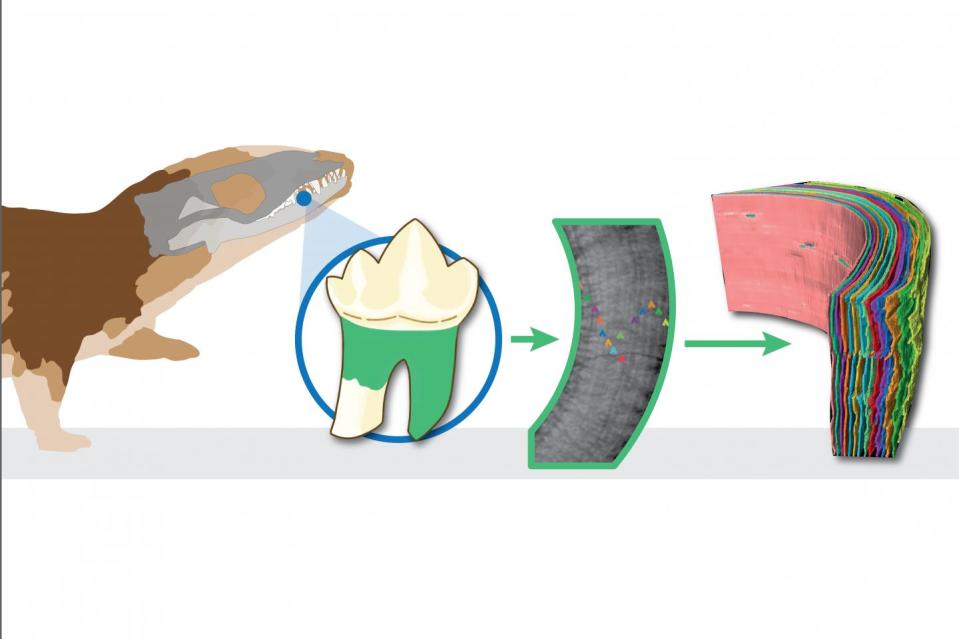Teeth from 200 million years ago 'show first mammals were very different'

The first mammals roamed Earth some 200 million years ago and alongside early dinosaurs – but they were very different from what scientists had thought.
Researchers scanned tiny fossilised teeth, and found that two of the earliest mammals lived slow-paced lives like lizards, rather than dying within a year like mice and shrews.
Fossil teeth from the animals – Morganucodon and Kuehneotherium – were scanned with powerful X-rays, revealing that they lived for up to 14 years.
Read more: In death, a crow’s big brain fires up memory
Dr Elis Newham, research associate at the University of Bristol, said: “We made some amazing and very surprising discoveries. It was thought the key characteristics of mammals, including their warm-bloodedness, evolved at around the same time.
“By contrast, our findings clearly show that, although they had bigger brains and more advanced behaviour, they didn’t live fast and die young, but led a slower-paced, longer life akin to those of small reptiles, like lizards.”

The researchers studied growth rings in the tooth sockets, deposited each year like tree rings that could be counted to reveal how long the animals lived.
The results, published in Nature Communications, indicated a maximum lifespan of up to 14 years for the animals.
Using advanced imaging technology in this way was the brainchild of Newham’s supervisor Dr Pam Gill, senior research associate at the University of Bristol.
Read more: Ancient remains could rewrite history of human intelligence
Gill said: “A colleague, one of the co-authors, had a tooth removed and told me they wanted to get it X-rayed, because it can tell all sorts of things about your life history. That got me wondering whether we could do the same to learn more about ancient mammals.”
By scanning the fossilised cementum, the material which locks the tooth roots into their socket in the gum and continues growing throughout life, Gill hoped the preservation would be clear enough to determine the mammal’s lifespan.
To test the theory, an ancient tooth specimen belonging to Morganucodon was sent to Dr Ian Corfe, from the University of Helsinki and the Geological Survey of Finland, who scanned it using high-powered Synchrotron X-ray radiation.
Corfe said: “To our delight, although the cementum is only a fraction of a millimetre thick, the image from the scan was so clear the rings could literally be counted.”
Read more: Ancient skull found in China could rewrite history of the human race
It marked the start of a six-year international study, which focused on these first mammals, Morganucodon and Kuehneotherium, known from Jurassic rocks in South Wales dating back nearly 200 million years.
“The little mammals fell into caves and holes in the rock, where their skeletons, including their teeth, fossilised,” Corfe said.
“Thanks to the incredible preservation of these tiny fragments, we were able to examine hundreds of individuals of a species, giving greater confidence in the results than might be expected from fossils so old.”

 Yahoo Sports
Yahoo Sports 